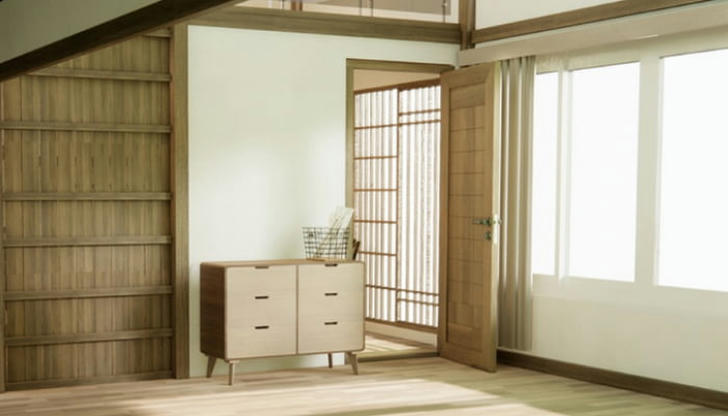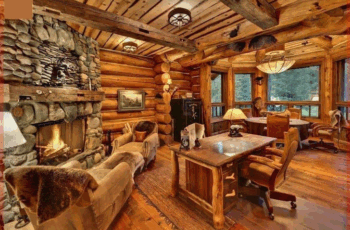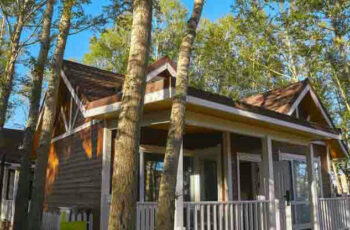
Owning a log home is a dream for many people, and honestly, there’s a reason for that. These homes have a kind of rustic charm you just can’t fake. But anyone who’s lived in one for a while knows it’s not always easy. Log homes are beautiful, sure, but they also need more care than your average vinyl-sided house. That said, it doesn’t mean you have to spend every weekend staining, sealing, or fixing cracks. With the right mindset and a few smart choices, you can cut back on maintenance and still keep your place looking great.
First off, one of the most important things you can do is to get ahead of moisture. Moisture is the enemy of wood—always has been, always will be. So the goal is to keep water away from the logs as much as possible. That means making sure your gutters are working properly, your downspouts are directing water away from the foundation, and there’s no splashback from the ground. A little gravel around the base and wide eaves can go a long way. If you’ve ever seen logs with that greenish-black stuff near the bottom, yep, that’s what happens when water hangs around too long.
And speaking of protection, don’t skip out on staining and sealing. You don’t have to do it every year, but it’s not a one-and-done kind of thing either. A good stain, followed by a high-quality sealant, acts like a raincoat for your cabin. It helps the logs handle sunlight, snow, and humidity without soaking it all in. Choose products that work well for your climate. What works in Colorado might not cut it in Florida. And when you do apply it, take your time—brush it in, follow the grain, and let it dry like it’s supposed to.
Another big help is to think about your landscaping. Believe it or not, the way your yard is set up can really affect how much work your cabin needs. Try to keep bushes, trees, and flower beds away from the walls. When plants grow too close, they trap moisture and create the perfect hiding spots for bugs. Plus, it’s just harder to check the walls when everything’s overgrown. A clear perimeter not only looks clean but lets your logs breathe a little.
Then there’s the matter of sunlight. Too much direct sun can bleach and dry out your logs, especially on the south and west sides. If you can, build a covered porch or use shade structures like pergolas to break up that harsh exposure. Even tall shrubs planted far enough away can offer some shade. Think of it like giving your house a pair of sunglasses—it helps it age better.

Critters are another concern. Log homes, with all their little nooks and crannies, can be pretty inviting to pests. Carpenter bees, termites, woodpeckers—you name it. Doing regular inspections helps, but so does prevention. There are wood treatments that can deter insects, and making sure your logs are well-sealed leaves fewer opportunities for bugs to move in. Also, keep firewood stacked away from the house. That pile may be convenient, but it’s also a playground for pests you don’t want near your living space.
Keeping your logs clean is something people forget about. Dirt and pollen can seem harmless, but over time they break down the finish and invite mold. A gentle wash once or twice a year helps a ton. Use a soft brush, some mild soap, and rinse well. No need to go wild with a pressure washer unless the grime is really bad. And always let the wood dry out completely afterward.
Check your caulking and chinking regularly, too. These materials move and stretch as the house settles or the seasons change. If you spot gaps or cracks, patch them up. It’s one of those small jobs that can save you from big headaches later, like drafts, leaks, or even rodent visits.
One trick that’s easy to overlook is ventilation. Good airflow, both inside and out, can do wonders for a log home. Make sure your attic is vented, your crawl space isn’t trapping humidity, and your HVAC system is doing its job. The drier you keep the air, the less chance for mildew and rot to take hold. Even just using ceiling fans or cracking a window on dry days can help.
The type of logs you have makes a difference, too. Some woods naturally resist bugs and decay better than others. Cedar and cypress, for example, tend to hold up really well. If you’re building new or replacing sections, it’s worth considering wood that will last longer with less effort. It might cost a bit more upfront, but it’ll pay off when you’re not out there restaining every couple of years.
And finally, don’t wait for something to go wrong before you act. Keeping an eye out for early signs—peeling finish, a little soft spot in the wood, extra condensation on the windows—can make all the difference. Set a reminder to walk around your home every season. Take notes, snap photos, keep a checklist if that’s your thing. You don’t have to fix everything at once. Just catching stuff early means the fixes are smaller, cheaper, and way less stressful.
It’s easy to fall into the trap of thinking log homes need constant attention. And sure, they’re a bit more work than your standard stick-frame house. But when you treat them right, they give back. They’re warm in the winter, cool in the summer, and they’ve got a personality you just can’t buy from a builder’s catalog. Keeping up with maintenance doesn’t have to be a burden. With a little planning and a habit of checking in before things get bad, you’ll save yourself time, money, and a whole lot of trouble.
Log homes are meant to be lived in, not just looked at. So go ahead—take care of it, and then sit back on the porch and enjoy what you’ve built.


